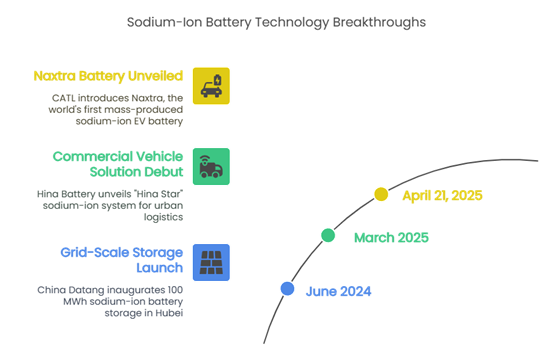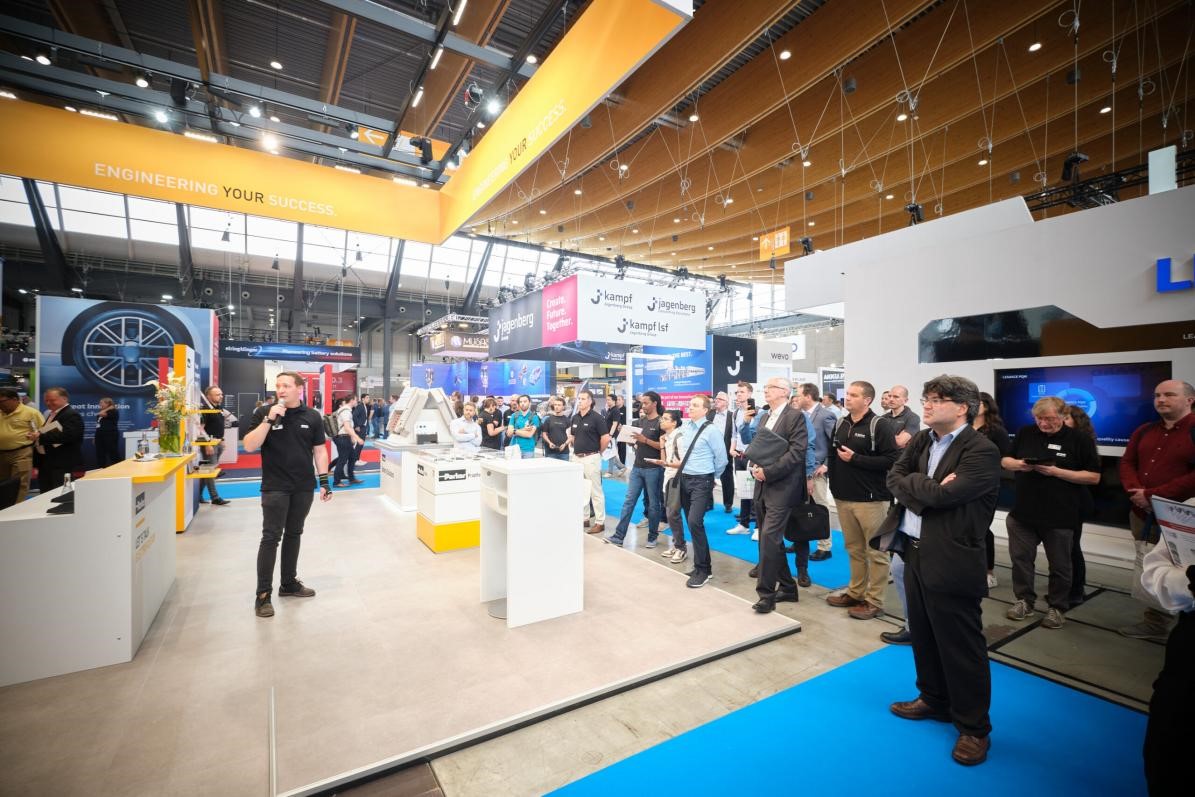Sodium-Ion Battery Technology Breakthroughs in China Are Driving the Energy Future
Under the pressure to find battery technologies that are safer, more cost-effective, and less dependent on scarce resources, sodium-ion batteries are quickly gaining ground.
In China, researchers and manufacturers are accelerating breakthroughs in this field, refining energy density and lifecycle performance to rival conventional options.
From CATL’s unveiling of the Naxtra battery to pilot applications in two-wheeled vehicles, energy storage systems, and beyond, the momentum is clear. Sodium-ion batteries are becoming a practical option. Dive in to learn what breakthrough is going on in sodium-ion battery technology!

What’s Changing in Sodium-Ion Battery Technology
The sodium-ion battery landscape is undergoing a seismic shift, driven by CATL’s groundbreaking Naxtra series—a milestone that redefines what this technology can achieve. Unveiled on April 21, 2025 as the world’s first mass-produced sodium-ion battery, CATL new battery Naxtra shatters long-standing performance barriers.
At its core, the Naxtra passenger EV battery delivers an industry-leading energy density of 175Wh/kg, rivaling mainstream LFP batteries and enabling a 500-kilometer range on a single charge.
But its true innovation lies in adaptability: it retains 90% of usable power even at -40°C, a feat that eliminates the “cold anxiety” plaguing traditional batteries. This extreme-temperature resilience, paired with a lifespan exceeding 10,000 cycles, positions sodium-ion technology as a viable, low-maintenance solution for electric vehicles and renewable energy storage alike.
Safety, a perennial concern for lithium-ion systems, is reimagined at the material level in Naxtra. By eliminating combustion-supporting elements, CATL’s sodium-ion battery Naxtra achieves intrinsic safety—a proactive design philosophy that moves beyond damage control to fundamentally prevent thermal runaway[1].
Early-Stage Applications
Grid Resilience: Powering Cities with Sodium-Ion Storage
In June 2024, China Datang Corporation inaugurated the world’s largest sodium-ion battery storage project—a 100 MWh facility in Hubei Province.
Developed by Hina Battery, this grid-scale system stores 100,000 kWh per charge, delivering peak-period electricity to 12,000 households daily while cutting 13,000 tons of CO2 annually.
As the first phase of a 200 MHz roadmap, it validates sodium-ion technology’s role in stabilizing renewable-heavy grids. Its modular design (42 battery bays) and seamless integration with solar/wind farms highlight sodium’s scalability, offering a blueprint for decarbonizing urban energy infrastructure[2].
Urban Mobility: Redefining Commercial Transportation
Meanwhile, sodium-ion batteries are electrifying urban logistics.
At a March 2025 industry summit, Hina Battery debuted its “Hina Star” commercial vehicle solution, featuring cells with 165 Wh/kg energy density and 20-25-minute full charges.
Engineered for heavy-duty use, the system withstands -40°C to 45°C extremes with ≤10°C temperature rise during fast charging—a critical advantage for delivery trucks and buses operating in harsh climates.
With 98% charge accuracy and 8,000-cycle durability, it slashes fleet downtime and maintenance costs, outperforming traditional lead-acid batteries by 61% in lifecycle efficiency[3].
Dual Strengths: Bridging Grid and Mobility Needs
From stabilizing megawatt-scale grids to powering frost-resistant EVs, sodium-ion technology is proving its adaptability. As China’s Hubei project and Hina’s commercial systems demonstrate, sodium-ion batteries are forging new pathways for a resilient, multi-powered future.

What This Means for the Global Energy Future
The rise of sodium-ion battery technology has implications far beyond China.
By easing dependence on lithium and other scarce materials, it offers a way to stabilize global battery supply chains and reduce geopolitical risks.
For markets where affordability and safety take priority—such as rural electrification, entry-level EVs, and large-scale energy storage—sodium-ion presents a practical, scalable solution.
Its compatibility with intermittent energy sources like solar and wind also opens new possibilities for off-grid and hybrid systems. As more applications prove viable, sodium-ion batteries could become a crucial enabler of the global clean energy transition, especially in regions where cost and resource accessibility are key factors in adopting new technologies.

Experience the Future at The Battery Show Asia
To learn more about sodium-ion battery technology, don’t miss The Battery Show Asia 2025, which is one of Asia’s premier events for advanced battery and electric vehicle technologies, bringing together engineers, innovators, and manufacturers across the energy storage value chain.
Be sure to attend Open Tech Forum: Market Trend and Technology Insights on Battery & E-Mobility on July 15, 13:30–15:10, which will discuss why China is making giant leaps towards sodium-ion battery commercialization in detail!
Register now and be part of the transition shaping tomorrow’s power systems!
References
- Naxtra Battery Breakthrough & Dual-Power Architecture: CATL Pioneers the Multi-Power Era. Available at: https://www.catl.com/en/news/6401.html (Accessed: 27th, May)
- ‘World’s largest’ sodium-ion battery energy storage project goes into operation in China. Available at: https://cnevpost.com/2024/07/02/world-largest-sodium-battery-energy-storage-project-in-operation (Accessed: 27th, May)
- 少装、快充、多用:钠离子电池商用车解决方案重磅发布!Available at: https://www.hinabattery.com/index.php?id=237 (Accessed: 27th, May)


